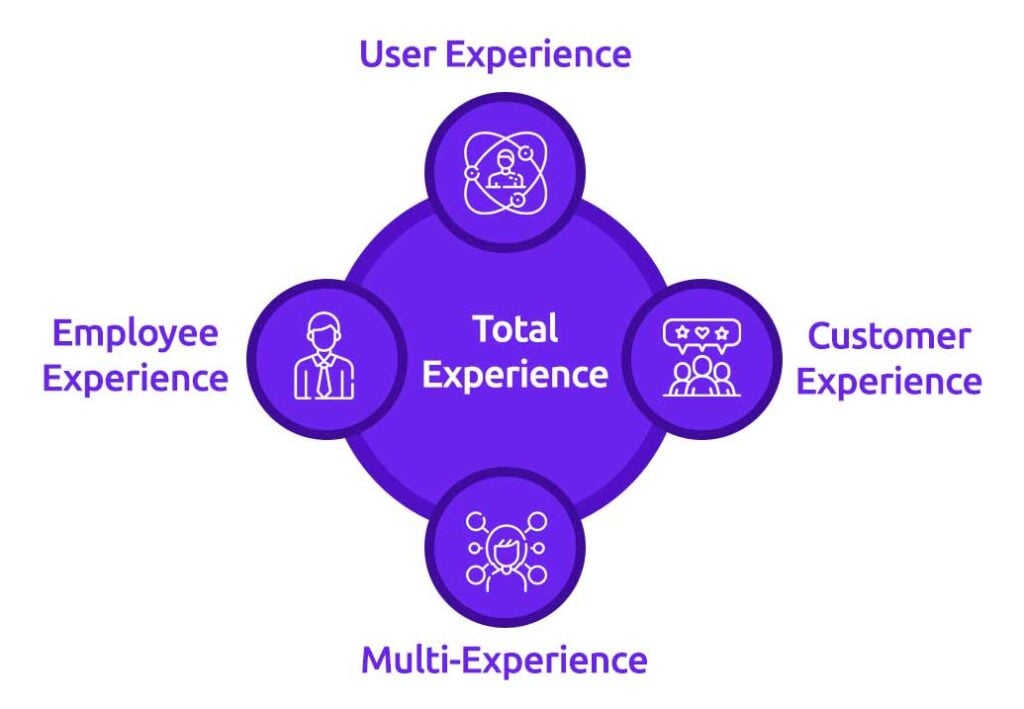Digital Transformation | 28 Jan 2022 | 8 min
Total Experience (TX)- The new tech buzzword for you

Ever heard of Walt Disney? The man who shaped our childhoods, the visionary behind popular names like Mickey Mouse, Goofy, and Donald Duck.
Walt Disney built a media empire that went beyond just a TV channel and some shows. He brought fantasy to life through Disneyland and Disney World to give his audience a larger-than-life experience.
Businesspeople have often banked heavily on providing such experiences and building a brand for themselves. Another popular example of this is Starbucks, wherein Jerry Baldwin, Zev Siegl, and Gordon Bowker birthed a vision of creating an immersive experience that went beyond just serving coffee to their customers.
In today’s competitive markets, creating such an experience can be pivotal to business growth. Thus, to replicate this in the realm of business, a new phenomenon of Total Experience came into being which unified User Experience (UX), Customer Experience (CX), Multi-Experience (MX), and Employee Experience (EX).

TX is a strategy whose goal is to enhance the overall experience of every stakeholder by eliminating siloes and integrating modern technologies in business processes. It is owing to this holistic approach that TX was termed as one of Gartner’s Top Strategic Technology Trend For 2022.
In my blog today, I will help you get acquainted with Total Experience, a new buzzword in today’s tech world, and elaborate on why you should consider adopting it for your business.
To begin with, allow me to shed light on the disciplines that intersect to create TX.
TX lifts focus from one constituent of product delivery and distributes it among the disciplines mentioned above. The experiences of customers and employees are connected by unique, inter-dependent aspects that subsequently affect the reputation of the business as well as the overall quality of the products or services they deliver. By combining all the stakeholder experience touchpoints, businesses can easily offer a seamless engagement experience with their brand.
In order to shape a holistic TX strategy, businesses must:
By doing so, businesses will be able to ensure complete satisfaction and seamless experience at every stage of the product delivery cycle.
In addition to the obvious advantage of a stellar stakeholder experience mentioned above, businesses can adopt TX to avail other benefits such as:
It is because of these prominent benefits that you should consider inculcating a TX mindset. By doing so, you will be able to elevate the idea of experience economics, which essentially entails creating an experience that engages end-users in a deeper way by orchestrating memorable events and adding value beyond your core products and services. By providing a well-rounded experience to anyone involved with your brand, you stop thinking about user experience (UX), customer experience (CX), multi-experience (MX), and employee experience (EX) as individual elements and start thinking of them as critical pieces of the scintillating TX puzzle.
Reach out to us at Nitor Infotech to learn more about how you can elevate your end-user experience as well as adopt a holistic TX strategy that will help you create a seamless experience and boost your revenues effectively.

we'll keep you in the loop with everything that's trending in the tech world.
